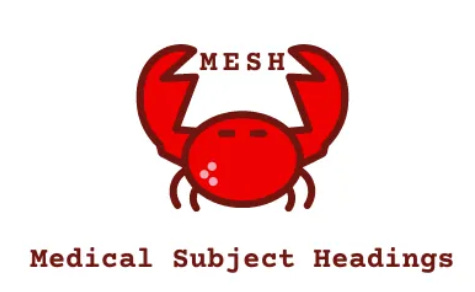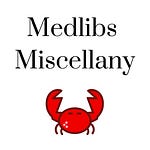Carrie and Tracy chat about Medical Subject Headings (MeSH), and the 2023 update that was recently released. We cover a lot!
Tracy was a bit off about the history of MeSH. What we know as MeSH today started in 1960. It evolved from Index Medicus, which was started by John Shaw Billings, head of the Library of the Surgeon General's Office, United States Army, in the 1940s. The Army’s Surgeon General library became the basis of the National Library of Medicine (NLM).
In the 1960s, NLM created MEDLARS, the computerized version of Index Medicus. MEDLARS online became what we know now as MEDLINE - the major bibliographic database that forms the basis of PubMed. All records in MEDLINE are indexed with MeSH.
Viagra (sildenafil citrate) was FDA approved in 1998. Impotence was the MeSH term until 2008, which it was updated to “Erectile Dysfunction”[Mesh] - a term that has less stigma attached to it. While it was not an immediate change around the approval, it’s hard (heh) not to assume some correlation, given the marketing.
NLM started automating indexing of medical literature in a limited scope starting in 2016, and transitioned to fully automated indexing in 2022. The MEDLARS Story (1964) is the video Tracy mentioned showing how indexing and other processing was done back in the day. The part talking about how indexing is accomplished starts at 03:34. Thanks to @katemsaylor on Twitter for sharing!
This film explains the early computerized medical literature and retrieval service of the National Library of Medicine. It demonstrates the information input by several sections of the Library; the complex machinery involved; and the retrieval of information for Index Medicus, bibliographies, and subject and title searches. The machinery used is a Honeywell computer that reads punched tape. [runtime 23:45]
As Carrie noted, the medical literature is growing exponentially, and COVID really added to it. Fun fact: on December 7, 2022 MEDLINE added its 30 millionth journal citation. Like we said, a lot of literature.
Crabs[mh] is not a real MeSH term, but it’s in the PubMed FAQs & User Guide.

"Brachyura"[Mesh] is a real MeSH term (Manhattan Toy Company makes a cute and cuddly crab). So is "Phthirus"[Mesh] (aka the crab louse, which you can get as a plush from Giant Microbes).
In case you aren’t familiar with the viral “corn kid” interview, you definitely need to check it out, along with the really catchy tune made from it. We think it kind of works with crabs, too…
🎵 It’s crab! A big lump with [pinchy] knobs! It has the juice (it has the juice). I can’t imagine a more beautiful thing! It’s crab! I can tell you all about it. I mean look at this thing! When I tried it with butter everything changed! 🎵
It is purely coincidence that we both live in areas near the Chesapeake Bay, well known for crab-related things. Oh, and did you know? Evolution keeps making crabs. Convergent evolution to a crab-like form is called carcinization, and it is totally a thing. The crab is also the symbol for the astrological sign Cancer. You can even use MeSH to make the distinction (“Astrology”[Mesh]) with the medical kind (“Neoplasms”[Mesh]).
On a more serious note, there’s been a lot of invisible labor by folks working to get changes to MeSH, especially the Population Groups. First there were Twitter threads from @LibGirl09, @wonderbrarian, and @lissertations discussing the problems. Then there was an open letter to NLM advocating for change. NLM responded and also held a listening session, and have more planned for the new year, along with classes on MeSH.
OMB is the Office of Management and Budget and sets the standards for race and ethnicity terms for the US federal government; they are currently reviewing the standards.
Medlibs have to sometimes use offensive, racist, and stigmatizing language in our comprehensive searches. One of our wonderful Canadian medlibs colleagues (her account is private) has a thoughtful Twitter thread about this issue. Our medlibs friends at the University of Michigan shared suggested wording that they developed if you have to use problematic terms in searches.
When People are Data: How Medical History Matters for Our Digital Age from Joanna Radin is the NLM History of Medicine talk Tracy mentioned; “Pima People”[Mesh] is another new term this year.
This talk focuses on the history of a particular collection of data, extracted and digitized from patient records made in the course of a longitudinal epidemiological study involving Indigenous members of the Gila River Indian Community Reservation in the American Southwest. The creation, circulation, and eventual restriction of the Pima Indian Diabetes Dataset (PIDD) demonstrates the value of medical and Indigenous histories to the study of Big Data. The history of the PIDD reveals how data becomes alienated from persons even as it reproduces complex social realities of the circumstances of its origin. [runtime 01:00:13]
One last thing: give NLM feedback and write to the help desk. These efforts do result in real change!
See also:
National Library of Medicine (NLM) resources
Tracy’s Twitter threads about MeSH annual updates
















Share this post